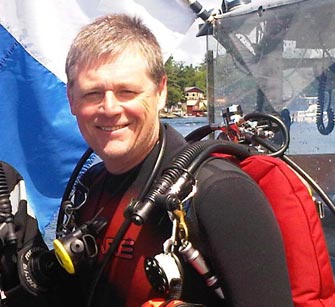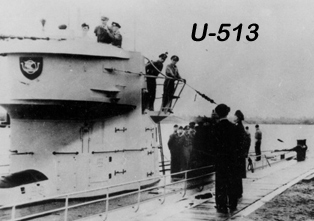
Robert Osborne has always been passionate about two things, story telling and scuba diving. He’s fulfilled the first of these passions through his work as a television journalist. For 28 years he’s worked for every major network in Canada as a producer and reporter. For the last 16 years Robert has been the Senior Field Producer for the CTV documentary program W5. As part of that job he’s travelled around the world filming stories to tell to Canadians. The work has taken him from the depths of Conception Bay to the top of Mount Kilimanjaro, from Haiti’s slums to Rodeo Drive. He’s met mob bosses and movie stars, rubbed elbows with the famous and infamous.
Along the way he’s indulged in his second passion—scuba diving. That began in 1971 when he was 16 years old when he checked a book out of the local library called “The Undersea World of Jacques Cousteau.” Within months of reading that book he’d certified as a NAUI open water diver with the Lahr Sub Aqua Club in West Germany. To add gravy to the whole experience, his certification took place in Bandol, France, the very place where Cousteau tested his self contained underwater breathing apparatus. Robert took a hiatus from diving during his university years (lack of funds.) But with the start of his career as a journalist he returned to diving and has never looked back—cramming in as many dives a year as work and family allow.
Eight years ago, Robert decided to start to combine his two passions. So he began to write magazine articles for diving magazines. Since then he’s been a regular contributor to Diver Magazine, Scuba Diving Magazine, Diver UK, AOL Travel as well as newspapers like The Globe and Mail. Robert has also managed to direct, write and host several underwater documentaries. One of those projects was “The Battle of Bell Island.”
Robert first came on that story while researching an article for Diver Magazine. It’s proven to be a story that has broad appeal—he’s written variations on the article for several magazines around the world. In the course of that work Robert has managed four trips to dive the Bell Island Wrecks, which he considers to arguably be among the best cold water dives in the world.
For more on Robert Osborne’s stories go to: canadiandiver.ca
The Battle of Bell Island

It was the fall of 1942. The so called “happy times” for German U-Boats was over. Now pickings were slim and hunting was extremely dangerous.

It took a bold commander to find easy targets. But in September of 1942, Captain Rolf Ruggeberg, was just such a commander. He sneaked into the allied anchorage in Conception Bay, Newfoundland and sank two freighters under the nose of the allied defenses.

What’s more astonishing about the Battle of Bell Island is that two months later U-518 did almost exactly the same thing. How these two commanders pulled off these two attacks is the stuff of Hollywood movies. But the results of these two attacks were a catastrophic loss of men and ships in the supposedly protected waters of the bay. In larger terms the attacks were also a wake up call for allied defenses on Canada’s east coast. The story of that battle is the subject of Robert’s presentation at this year’s conference.

“The Battle of Bell Island” will start with a screening of the CTV short documentary on the subject. That will be followed by a slide presentation covering additional details about the battle and the present day challenges facing the wrecks and divers who explore them.




